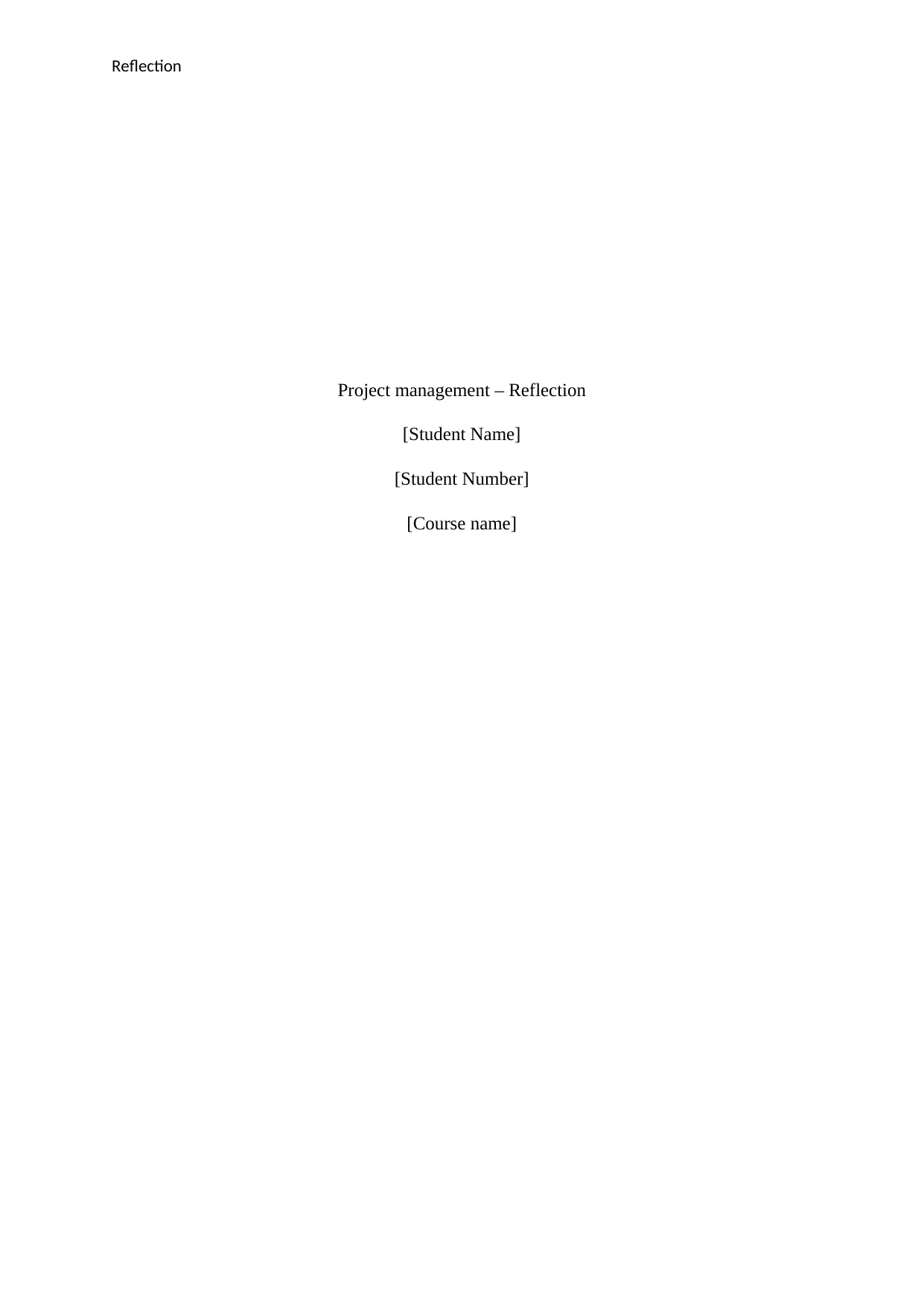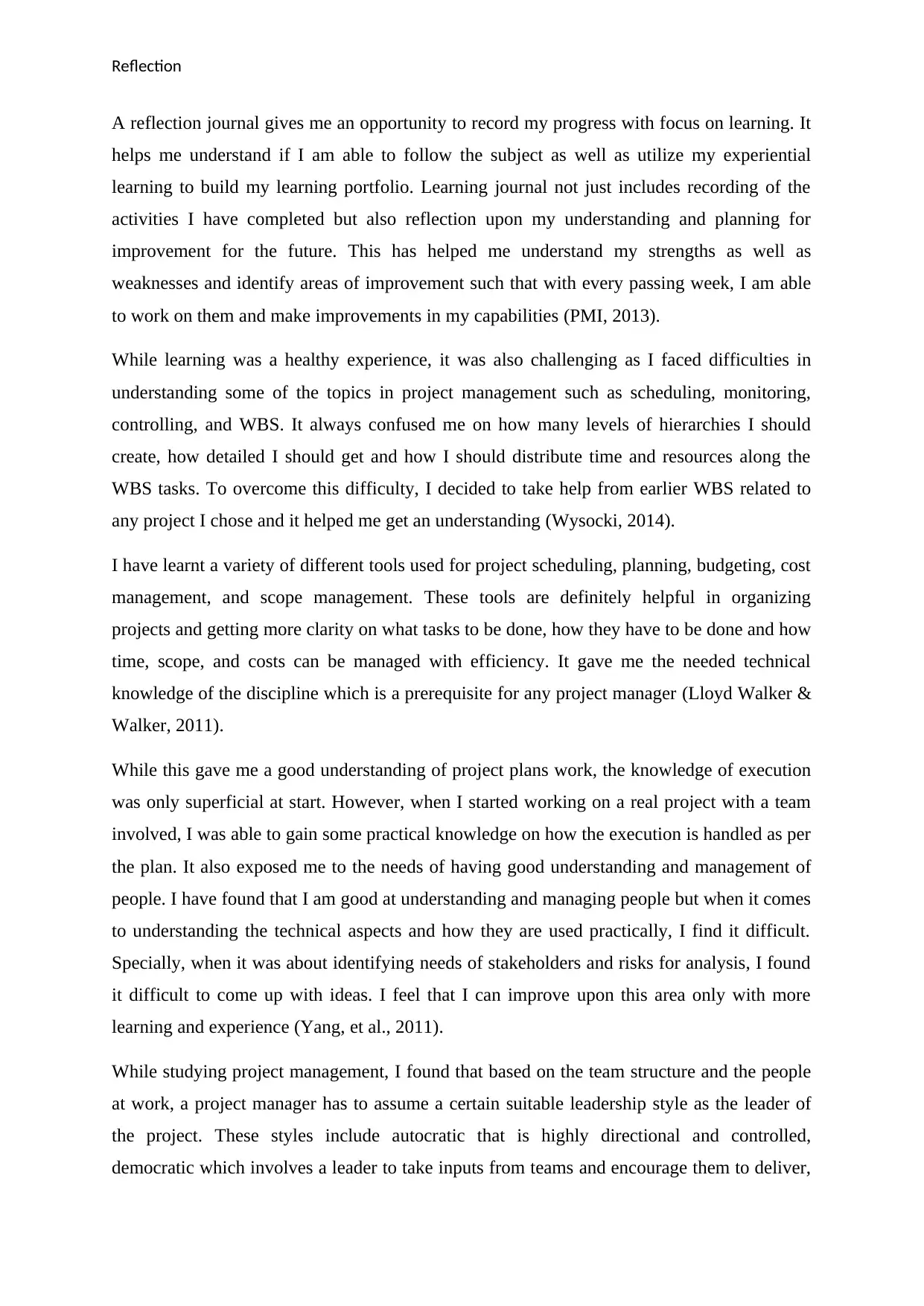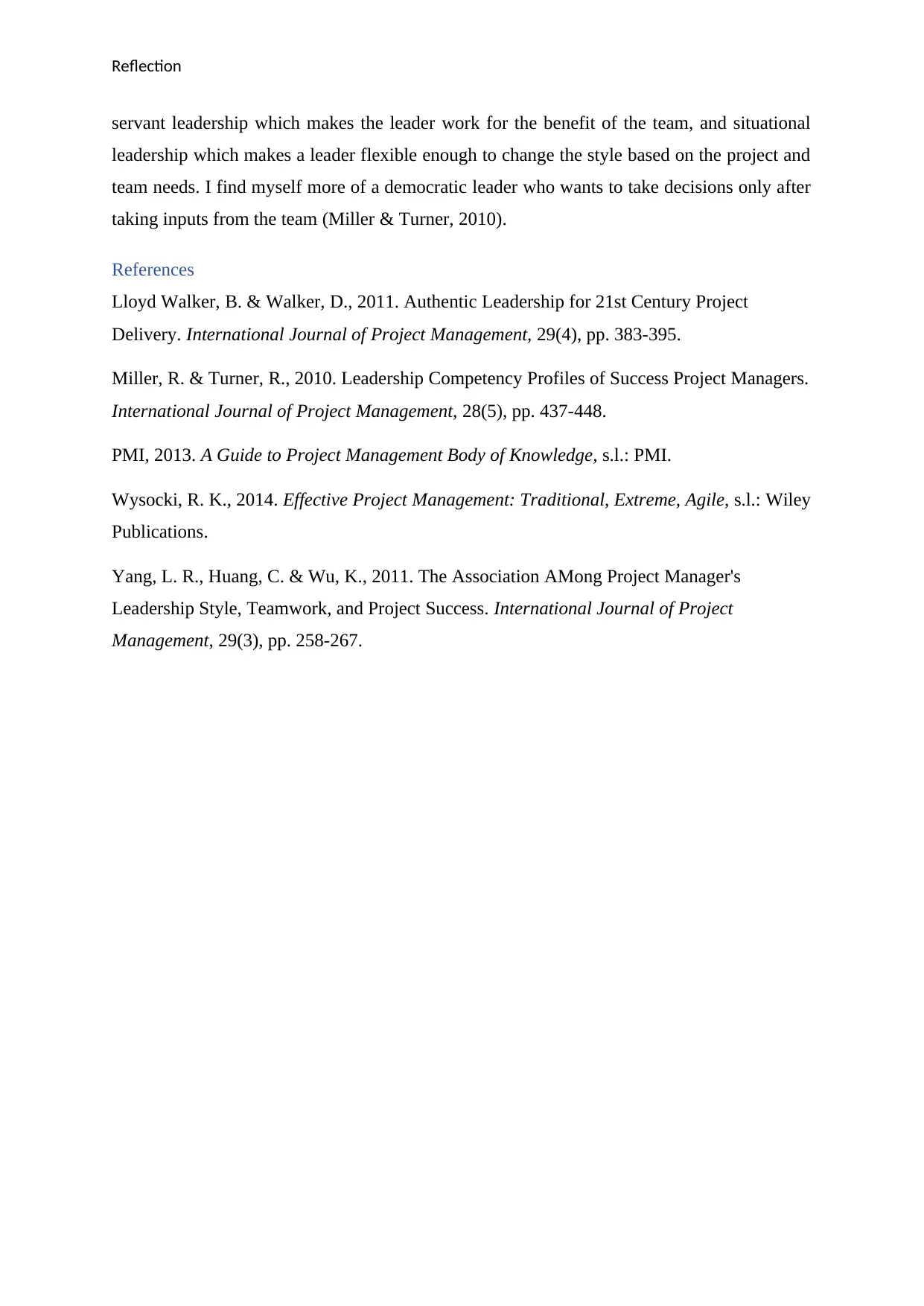Reflective Journal: Project Management Learning & Leadership Style
VerifiedAdded on 2023/05/30
|3
|752
|474
Journal and Reflective Writing
AI Summary
This reflection journal documents a student's learning journey in project management, highlighting both progress and challenges. The student reflects on understanding key concepts like scheduling, monitoring, controlling, and Work Breakdown Structures (WBS), noting initial difficulties and strategies for improvement. They discuss the acquisition of technical knowledge related to project planning, budgeting, and scope management, along with practical experience gained through real project work. The reflection also delves into leadership styles, with the student identifying as a democratic leader who values team input. Areas for further development include stakeholder needs identification and risk analysis, with a commitment to continued learning and experience. The journal concludes with a summary of references used to support the reflection.
1 out of 3









![[object Object]](/_next/static/media/star-bottom.7253800d.svg)